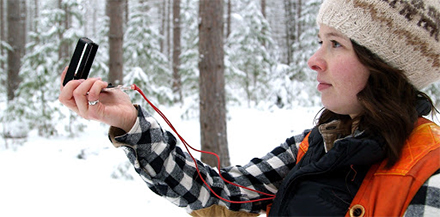I am one of more than 230,000 Canadians making a living in the forest sector. I will admit, as a self-proclaimed tree-hugger growing up in a mining town in Labrador, this is not a path I saw for myself.
Now, after more than 10 years as a Registered Professional Forester, I have learned a lot, including some things I would love to share with Canadians about how their forests are managed. I say “their forests” because over 90% of Canada’s managed forest area is on public land.
Giving forests value encourages their protection. There shouldn’t be shame associated with cutting trees, as long as we make sure they grow back. We all live in houses made of wood and recently experienced the Great Toilet Paper Shortage of 2020, while landscaping with wooden mulch and sipping coffee sitting on our new wooden decks. Fun fact: if you use coffee creamer, that has wood in it too!
In Canada’s publicly owned forests, no tree is harvested without jumping through many hoops. Years of planning, public and First Nations consultation, determining protection measures for wildlife including species at risk, plus careful balancing of ecological, social, and economic objectives takes places before a single tree can be harvested.
A managed forest is a healthy forest. We must realize that with human presence comes alteration of ecosystem processes. We put out fires to protect human values. In the absence of these forest-replacing disturbances, there is higher risk for uncontrollable fires because of fuel build-up, more risk of pest and disease outbreaks. How do you make a forest more resistant to climate change? Improve its health and vigour through management. How do you make a landbase suitable for a variety of creatures? Manage for a diversity of forest types and ages, representative of natural conditions.
Wood is our only renewable, natural resource. In addition, wood is beautiful, compostable and reusable. We’re seeing glimpses of new wood technology like transparent wood, biofuel-powered vehicles, personal protective equipment like masks, packaging to help reduce the use of single-use plastics, and more tall buildings made from cross-laminated timber.
We have some of the most stringent federal and provincial standards and regulations, plus 36% of the world’s third-party certified forests are in Canada. Every year, 400-600 million trees are planted in managed forests. Encouraging sustainable management in Canada’s forests and increasing innovation in wood products are two major pieces that can contribute to solving the climate change puzzle. I’m hopeful that the time is right to make more use of wood, and that a prosperous forest sector will be a place many young Canadians will be proud to work in, like I am.
Trees grow back. We are legally and professionally required to ensure that managed forests successfully regenerate. Of equal importance, but often overlooked, is that trees have a life span and are taken out by fire, disease, insects, wind, or old age before the age of 120 in much of Canada’s forests. Less than 0.5% of available public forest area is harvested per year and turned into wood products that store carbon that would otherwise be released as the tree dies and decomposes.
People who work in the woods care a lot about forests. It is common for businesses to be family-run and multi-generational, truly care about the well-being of our forests, and intend to make sure their children (and children’s children) have the opportunity to make a living from the forest too. Aside from that, many forestry workers spend their free time in the woods – hunting, fishing, camping – so they are personally invested in doing a good job.
Lacey Rose grew up on the 53° N parallel in Labrador. Graduating from UNB in 2006 with a Bachelor of Science in Forestry, Lacey has been a Registered Professional Forester in Ontario since 2008. Lacey’s work experience has ranged from field work in the Boreal Forest to writing a forest management plan for 250,000 hectares of Crown Forest in the Great Lakes St. Lawrence Forest, and now, hands-on management of the Renfrew County Forest. Outside of these roles, Lacey is the Co-Founder of Women in Wood, and the host of the web-series “Mighty Jobs”.








